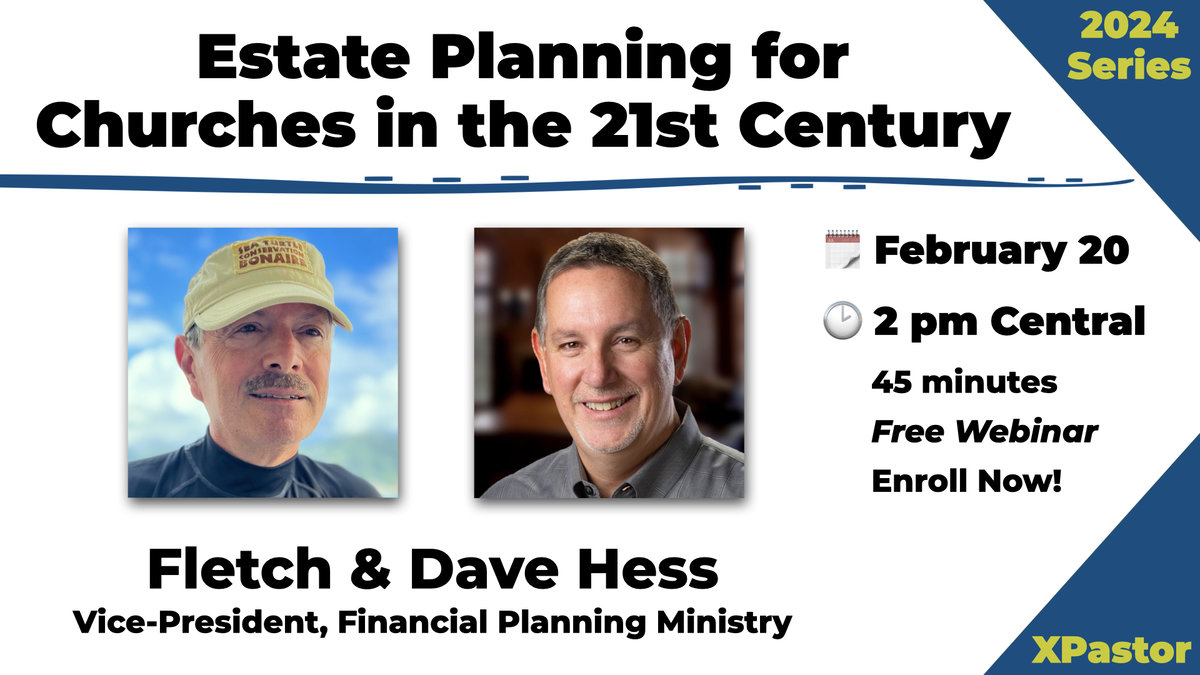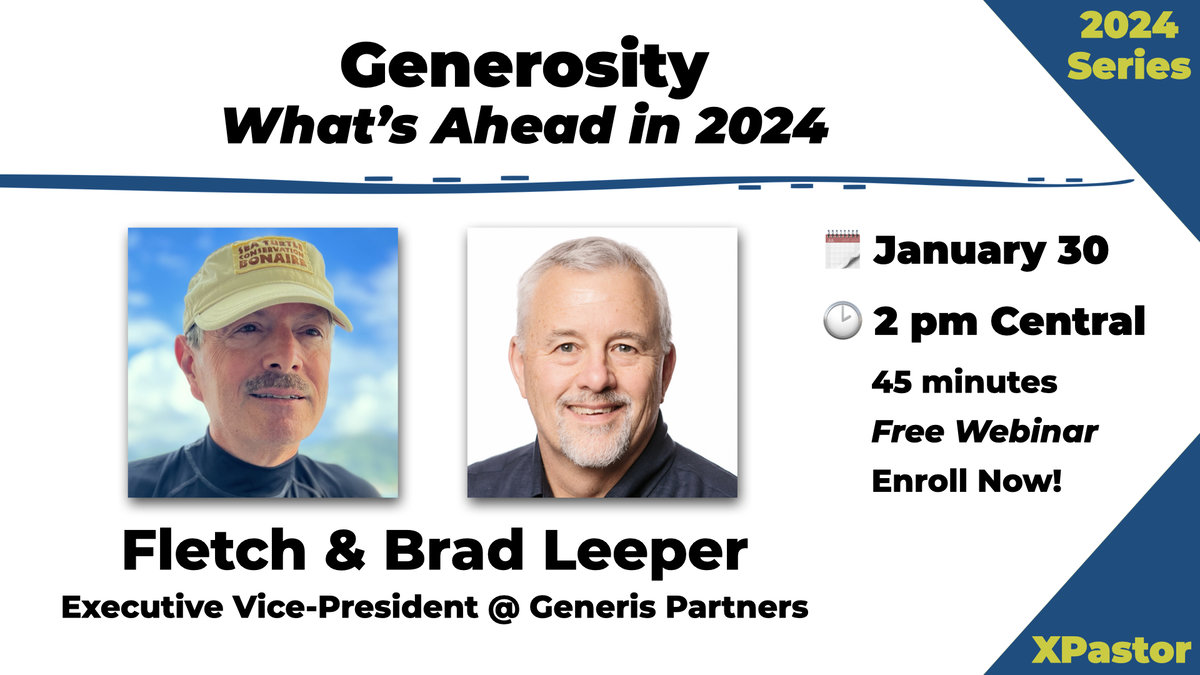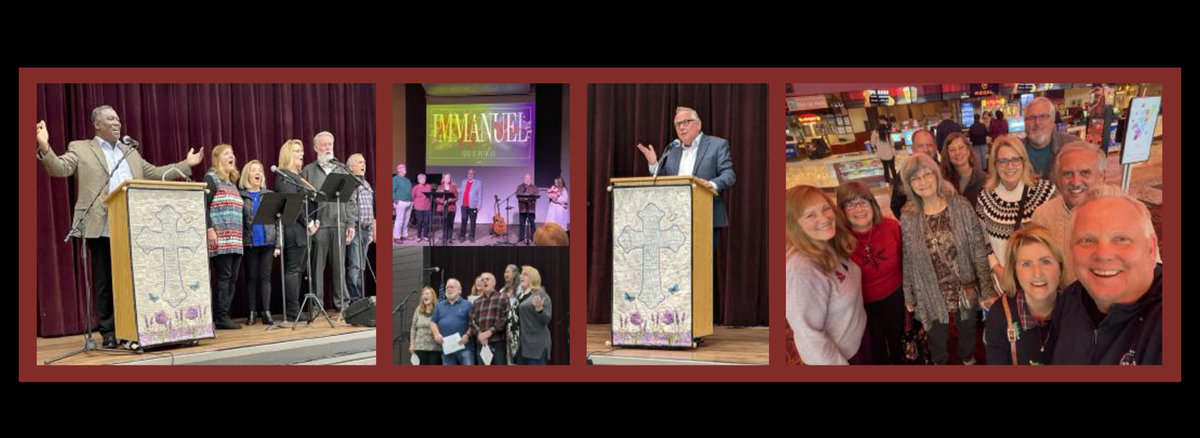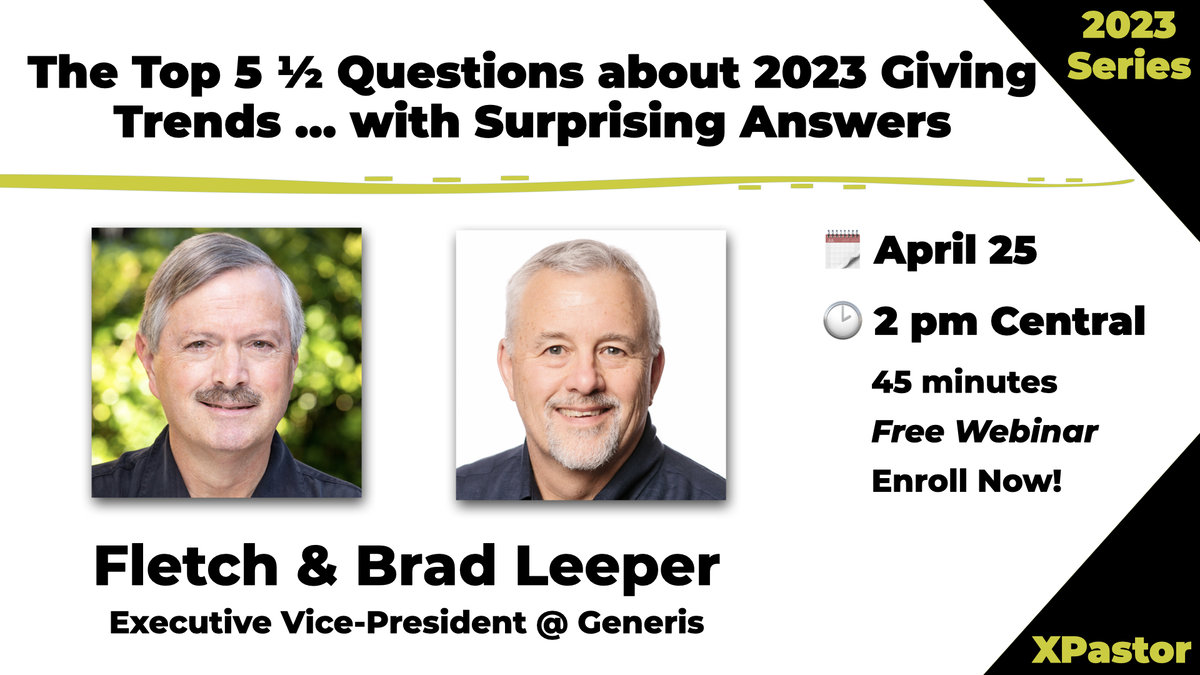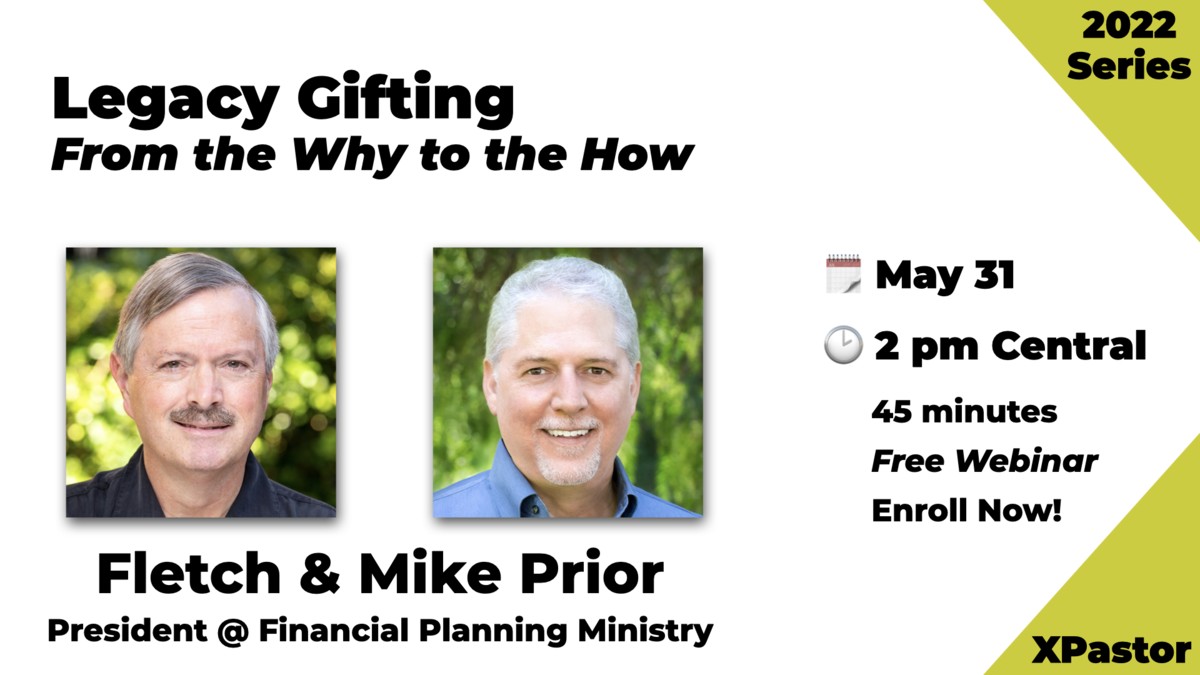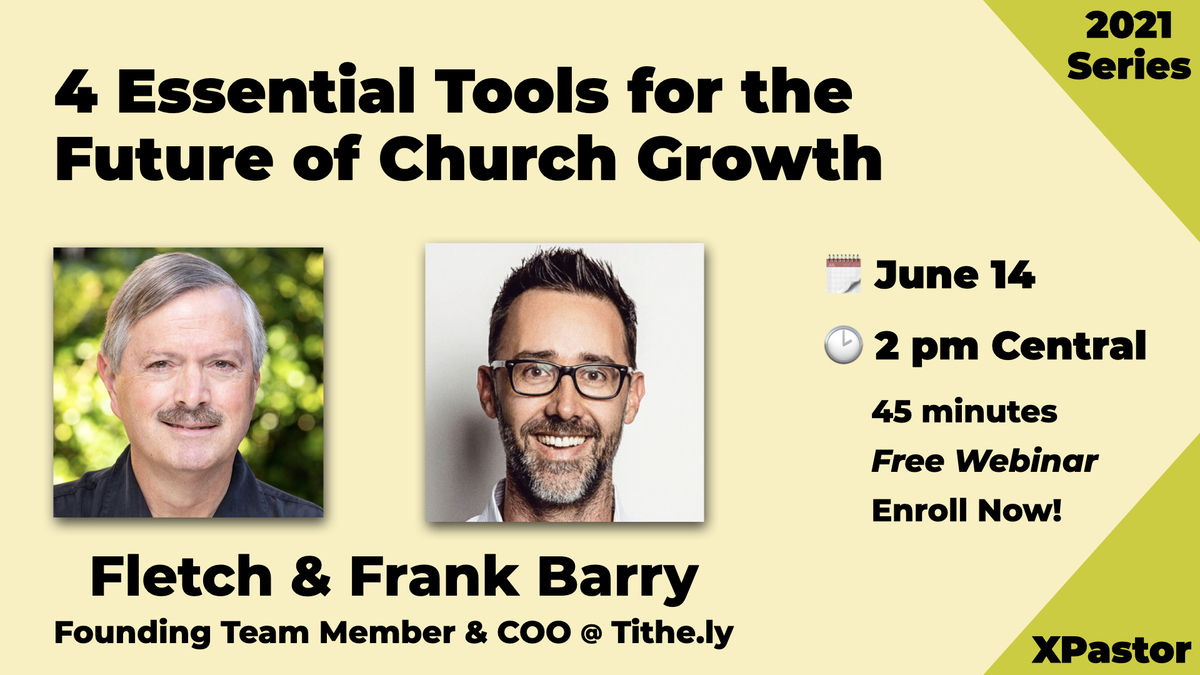Whether whispered silently in our heads or energetically wrestled through in leadership meetings, economic fears challenge churches. We offer hope and meaning to our communities and a world growing more restless in finding truth. What a terrible price to miss authentic ministry because we lacked financial resources, especially when our neighbors may be driven to their most open spiritual moments in years because of their personal financial stress.
As we move toward 2009, the financial uncertainties force us to ask the most penetrating questions about stewardship that we have asked in decades.
Churches can be abundantly resourced during the most challenging times. How can your church position itself to maximize financial resources, even in troubled fiscal climates?
Growing and courageous churches should consider these ten issues in preparation for the coming year.
1. A bold vision with meaningful results will rarely be underfunded
Now is not the time to shrink back from pursuing your neighbors in need. Even in the midst of personally challenging time, donors still want to make a meaningful mark on others. Internally, there is always that personal drive to live beyond ourselves and influence others. The church that vividly tells its story and challenges Christ-followers to live beyond themselves attracts financial resources.
Evidence shows that in down economic times, many church members do not treat giving as an expendable luxury item. They are inclined, however, to become far more selective in their giving outlets.
The church that consistently and creatively articulates a compelling vision and celebrates the successes will attract giving in hard times.
2. Conversations about giving must move beyond stewardship toward spiritual formation
Generosity is a spiritual issue of the heart. A person cannot move toward spiritual maturity until he or she understands that “where your treasure is, there your heart will be also.”
Our culture works overtime to convince us that there is no correlation between our faith and our finances. A first-time reader of the New Testament could not miss the plentiful teaching about our faith directly impacting how we live—not only now, but also how we build our treasure in heaven.
In conversations with pastors, I am constantly amazed at how fearful these leaders are in shepherding people in the area of finances. Spiritual leaders yield far too easily to the myth that is it inappropriate as a pastor to interact with people about their possessions. Certainly, we would not give preference to the rich man as admonished in James 2. But we must not be passive about teaching how the incorrect image of money can prompt wanderings from the faith. (1 Tim. 6:10)
The last frontier in American Christianity is the conversation about money. Spiritual transformation’s last obstacle is our wallet.
Asking for money without the backdrop of spiritual formation will hit minimal financial results. The church that aligns spiritual formation and money will never lack. One cannot help but to give generously if there is a vibrant connection with their faith and finances.
3. Conversations must move beyond stewardship to generosity
With all due respect to the biblical concept of stewardship, the term itself is passive, hard to understand, and boring. In the secret places of the heart, people do not long to be good stewards. They do long to make an impact. To be a difference maker. To be generous to the point of giving up something that is good in exchange for something that is better.
Churches that celebrate generosity become more generous. Churches that are silent about generosity become zealous about cutting expenses. I have lived in that cutting expenses season. Experiencing generosity is much more fun.
Try a vocabulary shift in 2009. Replace stewardship with generosity and unpack the stories about how the generosity of your church changed lives. Watch your giving flourish.
4. Churches must speak more intentionally about finances
Economically tough times create intense static in the minds and hearts of your people. Consider that we have been accustomed to a consumer-driven lifestyle accompanied by $3 cups of specialized coffee and the internal confusion hits decibel levels too loud for even 18-year-old rockers.
Where do your people stand in juggling financial realities? According to a USA Today article in May 2008:
- 9 out of 10 consumers in their 30s are in debt.
- 45% of respondents in one survey said they had too much debt to think about saving. Do we think the answer is any different about their generosity?
- 20% of adult in their 30s are still paying college loans.
Another source reports that Americans now save, on average, less than 1% of their income. How can we expect people to give generously when their margin is already so razor thin?
Be daring in your coaching. Teach people how to get out of debt. Teach them how to save. Inspire them to live above the roar of our consumer-driven machine.
When I perform a giving analysis for a client, it is very typical to receive a list of regular attending households (okay, relax. I do not ask for names) with over 50% of those households giving nothing in the last year. I have had pastors tear up when they realize that they are the number two top donor in the church. Your people are not as up to speed about finances as you think they are.
The church that preaches and teaches about sound, biblical financial practices will create a long-term culture that gives abundantly to match its compelling vision.
5. Churches can still raise financial resources for major projects if …
Churches that successfully raise additional funds for major projects make an audible roar from classic campaign approaches. Donors are eager to give to the right projects if we adapt our methods from past practices.
People eager to give generously look for certain qualities in a project before giving. Their decision making grid is radically different than even just a few years ago.
- Generous people look for more specific benchmarks and ask much harder questions in search for validation of the project.
- Does the project make sense? Is the reason to give sacrificially clear and compelling?
- Has the leadership thought this project through? Has the leadership done due diligence? Just because the pastor loves this project has little bearing on my love for the project.
- Would my investment directly help people? Buildings do not inspire me.
- There are far more attractive projects outside the church that appear more meaningful to me. Just because I attend church here does not mean that I automatically buy into your project.
- Does this project help the poor?
Give a change of pace from predictable practices to foster generosity.
Even though much of my work centers on capital campaigns, I fight hard to keep those two words from my interaction with clients. Most of my clients call their effort a “mission expansion project” or “vision expansion project.” Stewardship is replaced by generosity. Vision casting and telling gripping narratives begin months in advance, not compressed into a five-week package. Print media is replaced with moving video work that is viewed repeatedly on YouTube.
The traditional three-year giving period for a mission expansion project can be shortened. People are increasingly skeptical about long-term commitments. A fast growing church can actually be hindered with a long giving season.
Churches that have made adjustments to converse with a new kind of donor still cultivate significant resources for their vision.
6. The church must intentionally build greater trust with its people
Most church giving, especially project-driven giving, is in direct correlation with the trust account balance with its people. How often and how creatively can you build the trust connection that gives people instant freedom to say yes to a spiritual investment?
Your people might love the primary teaching pastor. They most certainly love the people of their church. Significant trust comes from neither of these sources. Shaping confidence is a neglected art.
- No bank account replenishes itself automatically after a withdraw. So, too, must church leadership constantly make trust deposits.
- How can we increase our trust account?
- Tell people frequently how their financial gifts are being used.
- Teach how they are building treasure in heaven.
- Celebrate generosity at each offering.
- Help people understand how financial accountability is a big deal in your church.
- Maintain an open atmosphere about your finances.
- Unapologetically spend money on an annual, independent audit and proclaim the results of the clear audit. Make audit copies available in your lobby.
- Leaders appropriately share how they give.
- Send a thank you note to a household after their first gift to the church.
As we swim in these economically turbulent waters, consider more radical moves to build trust.
- Stop ineffective ministry even though you will take hits. People are having to adjust their budgets by stopping spending that they would rather not stop. Model for them how to adjust spending patterns.
- Redeploy budget line items to more practical human needs. Food banks, justice ministries, fighting child slavery, mercy ministries and other such works are perceived as far more important than operating expenditures. If the economy worsens, you will need to support some in your church to ride out the storm.
Consistently building trust accelerates generosity.
7. Potential larger gift donors need pinpoint coaching and encouragement
As leaders, we hear an outstanding vocalist and we encourage them to move into the music ministry. We find a young leader gifted as a communicator and we prompt them into ministry options. Yet, we find a person with financial capacity to give large sums and we go into silent mode.
Churches that coach and elevate the gift of giving contribute vast resources for Kingdom work. Rather than showing the rich man favor, we actually raise the bar of discipleship for them and release enormous sums toward those things that stir the heart of God.
Most potentially larger gift donors are often paralyzed about their giving. They often are ill-equipped to know how to give, where to give, and the mechanics of making wise gifts. Appropriate financial guidance can multiply a gift to your church while legally minimizing tax liabilities. Our government tax code subsidizes our giving. Although people can earn huge dollars, they are not automatically inclined to know how to give wisely. A wealthy person who understands how much is enough can substitute giving for lifestyle and release untold resources to valuable ministry needs.
Churches that disciple high capacity donors multiply vast amounts of resources.
8. Leaders must model sacrificial giving
We cannot lead people where we ourselves are not going. Our people are hungry to view authentic leaders living and giving in the context of faith. Leading by example inspires. How we model and appropriately demonstrate generosity can be tricky. It is done with integrity and humility in generous churches.
9. Human need trumps brick and mortar
Pastors tend to like ministry and facilities large. People like church to feel small and relational. Pastors understand how facilities are tools to reach more people. Most people, however, are less concerned about the facility and more concerned about human needs.
It is the new normal now to include the human element in vision expansion projects. Church planting, multisite, a clinic in Africa, homeless ministry in the community, and similar high human touch elements are increasingly expected in major projects. Human investment validates the construction.
A colleague worked with a client’s vision expansion project that had nothing to do with any construction undertaking. Every investment dollar flowed boldly to planting churches around the city. The multiple of annual income raised was incredible!
A clear connection on how personal giving reduces human need throws gasoline on generosity.
10. Free yourself from the past: Your church members have
The recent Barna report on giving in 2007 repeated the same theme from prior years. Just 5% of American adults tithed. The most generous segment, evangelicals, only topped the charts at 24%. The numbers have remained steady over the decade. We are anemic as a church in prompting generosity.
Trends in giving, however, are shifting more radically than ever before.
For those of us passionate about the local church, Barna sends up a bright warning flare. People are changing how they relate with the church. No longer content with standard church interaction, they are “expanding their circle of Christian relationships beyond local church boundaries.” People increasingly give their money to organizations other than the church.
I served a client this past year that had small groups unofficially connected with their church in multiple states. This strategy was not intentional nor were these groups even supported by the church. The groups emerged from a meaningful interaction with the church podcast ministry. These groups gave generously to this church without a hint of request by the church.
There is an increasingly sophisticated donor in an ever increasing competition for the faith dollar. A challenging economy will accelerate the competition. Many donors fail to connect how their attendance at your church translates into giving practices to your church.
If inspired, motivated, and simply prompted, however, people would still rather give to their church. Our silence leaves them uninspired, unmotivated, and believing that we have no need of financial resources.
The church that shifts generosity dialog and practices to better match the shifting patterns will receive substantial resources.
Conclusion
As we consider ministry plans for 2009 in the midst of economic uncertainly, understand the urgency of making adaptations to your giving practices. You will find the process engaging, energizing, and incredibly meaningful to your people. They will be transformed with an amazing collaboration with their investments and God’s call on your church.
This article was originally published in COOP magazine. Used by permission.


